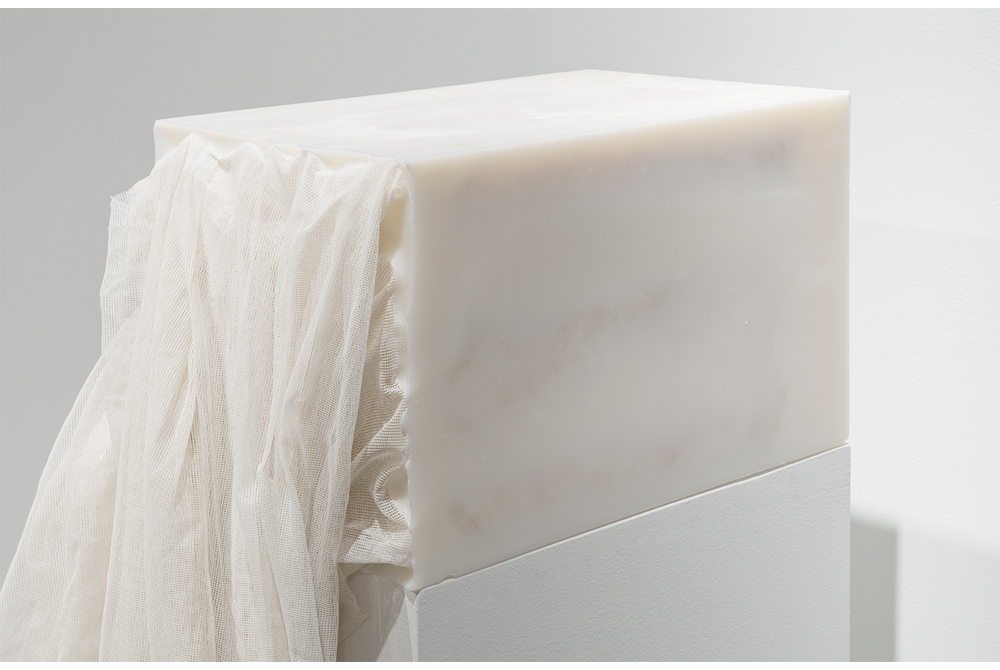Iris Häussler has produced some of the most innovative installation works of the past decade in Toronto. The Legacy of Joseph Wagenbach (2006) became something of a city event as viewers bought into the fiction of an immigrant loner artist leaving behind an abandoned house filled with suggestive figurative art. A few years later at the Art Gallery of Ontario, in He Named Her Amber (2008–10), a walk through the Grange annex became an archaeological expedition back to the mid-19th century and hidden waxworks created by a fictional Irish maid, Mary O’Shea. A new project involving a fictitious early 20th-century female painter, Sophie La Rosière, is currently in development for Paris.
One only wonders at Häussler’s inclination to hide. Her less than frontline public authorship has made for artworks that verge on theatre. There is an authorial voice shaping events, a time frame, a process of discovery, characters—all the things usually absent from a standard art exhibition, unless it is a retrospective or historical survey where the artist is very much a developing character in the proceedings. Häussler’s hiding is a strategy of course. It is a means, by absenting herself, to make her audiences think themselves imaginatively into a narrative framework—a framing device that asks us to consider the history that lies behind made objects.
This raises the stakes for solo shows presented under her own name. The first at Daniel Faria Gallery was in 2013 and titled “Also Known As….” It featured, among other things, a range of works that harked back to the Wagenbach/O’Shea projects and a vitrine installation of personal notebooks. Every work was deft, sensitively fabricated and locked into dialogue with late 19th, early 20th-century modern artmaking with its formal vocabulary of opened surface textures, foregrounded materiality, dissolving forms, expressive gestures and a sense of psychological innerness. Häussler’s own work captured the gist of this early-Modern sensibility, only catapulted into the 21st century.
In conversation, Häussler has remarked on a memorable visit she once made to the Medardo Rosso Museum near Lake Como in northern Italy. Rosso’s sculptures pushed Impressionist surface towards a proto Modernism that influenced Rodin and Brancusi. The fleeting shiftings of light and shadow over the surfaces of Rosso’s figures were due in part to an individualized wax/plaster technique that brought a sense of muted liquidity to his sculptures. It seemed to embody softness and time and combined representation of action with perception. A similar set of concerns anchor Häussler’s works. She too often uses wax as a casting medium and final surface. In “Also Known As…”, several wax wallworks fused coloured metals and fabrics into rectangular, painting-like containers. Each of the works had the German pronoun Sie in its title (it can mean her, you or they, depending on context). On the wall, they read like abstract female portraits and brought a gender unity to the show. One from 1999, the earliest and largest, featured wax and “abandoned” curtains, and carried the title Lost Gaze, a phrase that in itself could be a summarizing description of Rosso’s art.
Such a lost gaze is a fusion of memorial, testimony and personalized subjectivity and it carries over into all of the works in Häussler’s new show, “Ask the Frog.” This time, wax and embedded fabrics form the basis of a suite of untitled sculptures. Almost all the works stand on plinths that associatively establish them alongside traditional figurative sculpture. Working with curtains, bedding and salvaged items of women’s clothing, Häussler creates trailing or rising forms bunched on wax bases like so many partly cocooned butterflies. The materiality of the fabrics and their fluctuating embrace of shadow and gravity bring a natural allure to the work, but the works command attention most engagingly at the point where fabric meets and mixes in a submerged state with the wax in the shaped containers. The blend of transparency and opacity and flesh-like surface softness makes the sculptures seem like hybrids, a combination of picture and body. When the fabrics visibly bunch just under the surface of the forms, the effect is like a scanner-bed image that presses then sinks then suddenly materializes as it exits in florid folds that push into the space of the gallery.
There is eloquence, humour and mystery at work from piece to piece as they act out a calisthenics of objecthood that ranges from standing figures to reclining figures to flying figures to furniture to laundry bins. The wax can at times look like marble, which lends an air of grandness to a show made essentially with modest materials. At the entrance to the gallery, a serious-faced frog sits on a newel post holding a tray loaded with handwritten cards, each with two different words written in German, one on the front, one on the back, like options in a guessing game. For those who don’t read German, they might want to know that Häussler still keeps her hand in with the rudiments of narrative. The verbs are missing in her assembled vocabulary, but a set of conditions is made present with words like curiosity, time, sharing, closeness, joy, devotion, tenderness, transformation, attention, hope…and many more like them. They are all states of being, states of becoming or, depending on your inclination, states of disappearing. That open-endedness is the loosely draped narrative this time and it is still very much a human story.









